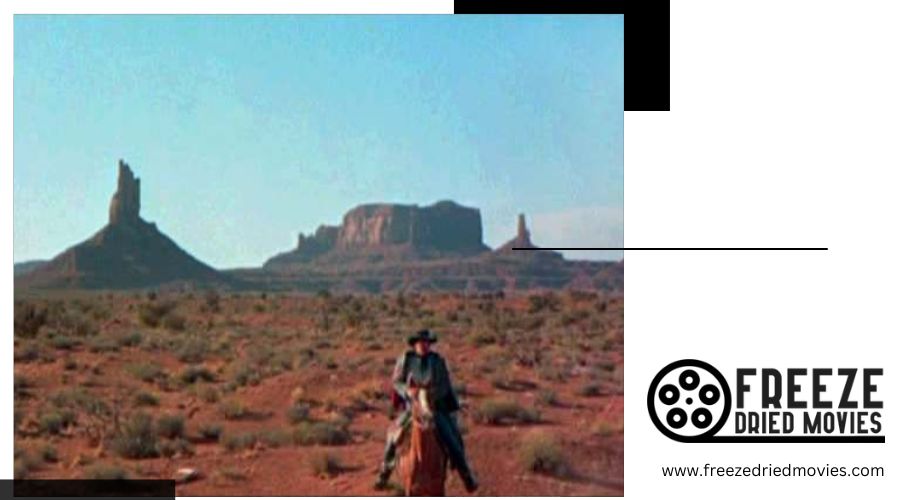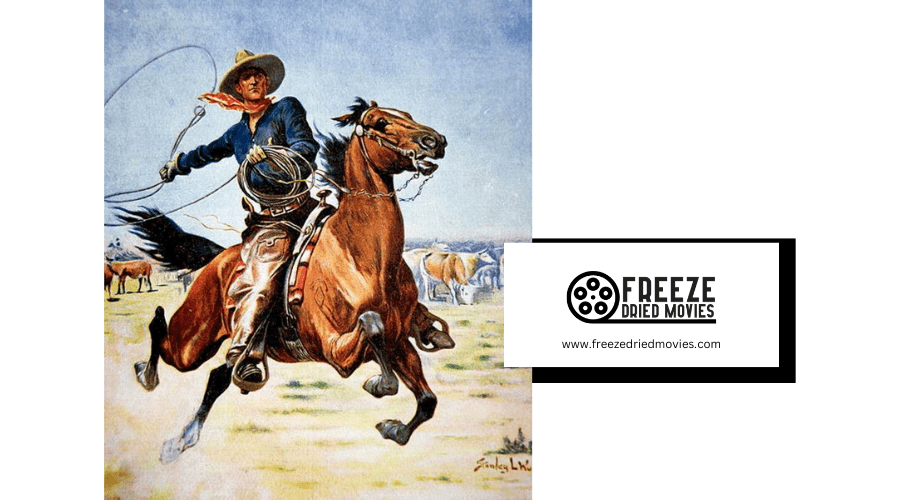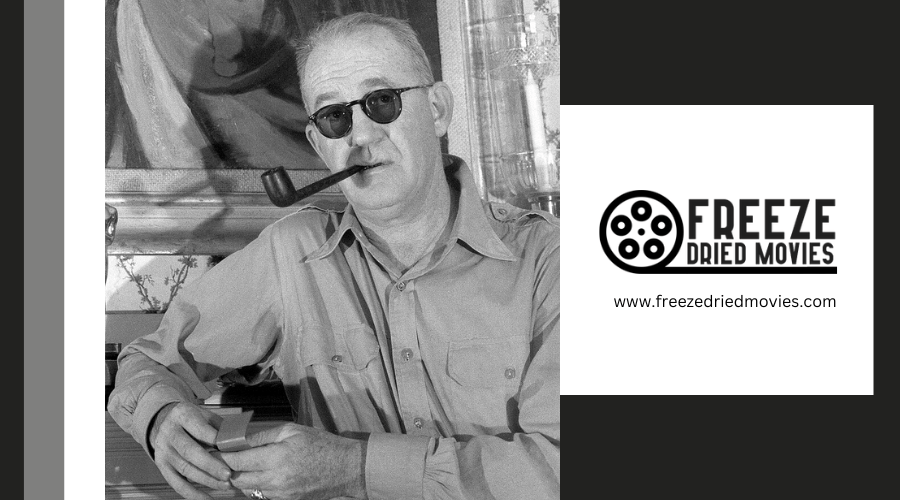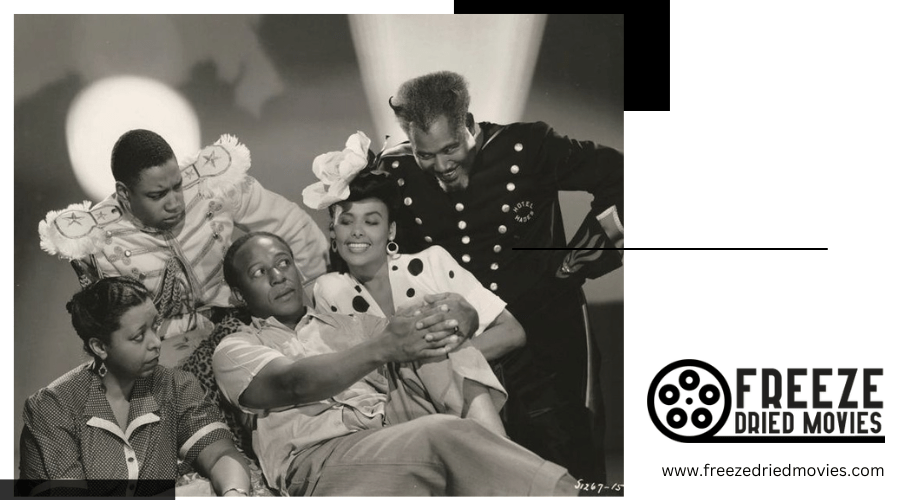How Did the Landscape of the American West Influence the Cinematography of 1950s Westerns?

In the 1950s, Western films frequently enhanced their narratives by utilizing the vast deserts and mountain ranges of the American West. Directors like John Ford prominently featured Monument Valley's striking rock formations and expansive horizons, using these elements to underscore themes of isolation and danger.
Cinematographers employed natural lighting to boost the authenticity of these barren landscapes, capturing how sunlight interacted with the desolate terrain and cast long shadows. Wide-angle lenses were crucial in these films, immersing viewers in the vastness of the scenes and highlighting the grandeur of the frontier.
This approach demonstrates the significant influence of landscapes on the cinematographic techniques of the era.
Iconic Desert Landscapes
Monument Valley, straddling Arizona and Utah, epitomizes the iconic desert landscapes of the American West, immortalized in numerous 1950s Western films. Director John Ford, in particular, exploited these settings for their stark beauty and grandiosity, which significantly enhanced the visual storytelling of his films. The landscapes didn't merely serve as backdrops; they were integral to the narrative, contributing to the themes of isolation and peril that are characteristic of the genre.
The distinctive rock formations and vast horizons did more than fill the scene; they established the film's mood, defined its tone, and amplified the wild, untamed essence of the West. Envision the cinematography that captures the intense sunlight, the arid grounds, and the elongated shadows cast by the desert, each element meticulously contributing to an authentic Old West ambiance that feels almost tangible.
In essence, Monument Valley's towering rock structures and expansive skies were crucial in shaping the essence of 1950s Westerns. The landscape didn't just influence the visual elements; it deeply impacted the storytelling, embedding the American West into the fabric of cinematic history.
Mountain Ranges and Vistas
Mountain ranges and sweeping vistas played a pivotal role in the visual storytelling of 1950s Western films, serving not just as settings but as integral characters within the narratives. These elements—the rugged terrain and expansive views of the American West—added authenticity and grandeur, enhancing the stories of adventure and epic struggles depicted in the films.
Directors and cinematographers of the era expertly leveraged these landscapes, using them to amplify the storytelling. The vast vistas and towering peaks framed and intensified the action, reflecting the limitless possibilities and the tough realities of frontier life. The mountain ranges, with their formidable presence, underscored themes of resilience and conquest.
In the context of 1950s Westerns, the mountainous landscapes of the American West transcended their role as mere scenic backdrops. They became crucial components that shaped the cinematic language of the genre. Each film uniquely captured these elements, allowing viewers to not only see but feel the expansiveness and challenges of the American frontier. Thus, the mountain ranges and vistas emerged as enduring symbols in cinematic history, contributing significantly to the film's immersive experience and narrative depth.
Cinematic Use of Canyons

Canyons, with their dramatic cliffs and deep crevices, served as a visually captivating backdrop in Western films of the 1950s. As you explore these films, observe how the canyons' grandeur and ruggedness not only set the scene but also amplify the visual narrative. The expansive vistas of the American West contrast sharply with the confined, perilous spaces within canyons, offering a visual metaphor for the challenges faced on the frontier.
- The depth and scale of the canyons highlight the frontier's vastness, reducing characters to mere specks within the expansive landscape.
- Cinematographers leveraged the stark contrast between the high canyon walls and the expansive sky to underscore the characters' isolation or vulnerability.
- The canyons' unique geological features symbolize the wild, unmastered nature that characters in 1950s Westerns endeavored to navigate or tame.
In these films, the use of canyons as natural settings enhances the storytelling, portraying the American West as more than just a backdrop but as a character in its own right. Watching these films, you'll appreciate not only their visual appeal but also the intricate way cinematography from that era used natural landscapes to deepen narrative themes.
Natural Lighting Techniques
Cinematographers during the 1950s expertly utilized the abundant natural light of the American West to authentically depict its rugged landscapes and harsh conditions in Western films. Sunlight served not merely as a means of lighting but as a vital narrative element, enhancing the realism of the sweeping vistas.
By employing natural lighting techniques, cinematographers were able to highlight the stark contrasts between the towering mountains and deep valleys. The landscapes came alive under the bright sunlight, which meticulously outlined the contours and cast long, expressive shadows, adding both visual depth and emotional intensity to the scenes.
To understand these techniques further, refer to the table below that outlines various natural lighting methods used in 1950s Westerns:
| Aspect | Description | Impact on Scene |
|---|---|---|
| Direction of Sun | Determines shadow length and direction | Enhances the mood of the scene |
| Time of Day | Golden hours provide a softer, warmer light | Softens the rugged landscapes |
| Cloud Coverage | Adjusts to modify sunlight intensity | Adds texture to the sky |
| Season | It affects sunlight angle and intensity | Changes the visual color palette |
| Landscape Features | Interacts with natural formations | Creates visual dynamics and contrast |
Filming Techniques and Tools
Exploring the impact of 1950s cinema, it's clear that the filming techniques and tools used were pivotal in bringing the vast Western landscapes to life. Cinematographers of that era skillfully utilized the dramatic settings of the American West to create visually iconic narratives. Here's a detailed look at the methods they employed:
- Wide-angle lenses: These lenses were crucial for capturing the expansive vistas characteristic of the American West. They allowed for detailed scenes, from the rugged terrain at a cowboy's feet to the expansive sky overhead, making the setting an integral part of the story, almost like another character.
- Natural lighting: By using natural sunlight, cinematographers illuminated their scenes with a realism that studio lighting could seldom match. This approach not only showcased the stark, natural beauty of the landscapes but also enhanced the visual authenticity and emotional impact of the films.
- Long shots: Employing long shots brought audiences closer to the action, effectively placing them in the midst of the scene. These shots were particularly effective in conveying the isolation and expansiveness of the Western settings, which were central themes in the narratives of many 1950s Westerns.
Together, these techniques synthesized a unique cinematic experience that authentically represented and celebrated the majesty of the American West.
Character Isolation and Environment

In 1950s Westerns, the expansive, barren landscapes were not just settings but integral to the narrative, heightening the characters' sense of isolation. Envision a solitary cowboy amidst an endless horizon, each step he takes amplifying his solitude. These landscapes were essential narrative tools that enriched the emotional and psychological depth of the characters through visual symbolism.
The cinematography purposefully utilized these open spaces to connect viewers with the characters' internal conflicts and ethical struggles. Wide shots were employed not just for their visual appeal but as a strategic choice to convey the characters' vulnerability and perseverance within the formidable American West.
Here's how various elements contributed to the narrative of character isolation:
| Element | Contribution to Character Isolation |
|---|---|
| Expansive landscapes | Highlighted physical and emotional solitude |
| Wide shots | Accentuated the stark contrast between character and environment |
| Harsh environment | Reflected internal conflicts and vulnerabilities |
| Visual metaphors | Enhanced understanding of characters' journeys |
| Scenery dichotomy | Emphasized themes of resilience and vulnerability |
Through these techniques, the settings of the West were more than mere locations; they were symbolic reflections of the Western genre's core, making the characters' journeys both physical and profoundly emotional.
Authenticity Through Scenery
While the expansive landscapes underscored isolation, they also conferred undeniable authenticity to 1950s Westerns. Directors such as John Ford utilized the distinctive topography of locations like Monument Valley to ground their narratives in a tangible, realistic setting that viewers could almost feel. The American West served not merely as a backdrop but as a vital character that enriched the cinematic experience with its raw, untamed beauty.
The cinematography of these films extended beyond mere action capture; it aimed to encapsulate the essence of the immense scale and visual grandeur of the landscape. Here's how the scenery conveyed authenticity on screen:
- Monument Valley's towering sandstone buttes: These iconic formations framed many scenes, providing a majestic yet rugged aesthetic that epitomized the ‘authentic Wild West.'
- Expansive open skies and arid deserts: These features highlighted the harshness and vastness of the frontier, enhancing the portrayal of the characters' isolation and challenges.
- Dramatic natural lighting: Utilization of sunsets and intense midday sun helped set moods and indicate time passage, furthering the narrative with visual cues that resonated with reality.
Visual Storytelling Enhancement
The rugged terrain and expansive landscapes of the American West weren't merely scenic backdrops in 1950s Western films; they were integral to enhancing the visual storytelling. As you explore the cinematography of that era, you'll see how filmmakers effectively utilized the vast deserts and towering mountains to deepen the emotional and thematic resonance of their narratives.
Consider the wide shots typical of 1950s Westerns. These shots did more than display the environment; they contextualized the characters within a vast and often unforgiving wilderness, underscoring themes of isolation, endurance, and conflict. The distinctive rock formations and expansive plains lent an authenticity that resonated with the spirit of the frontier, transforming the setting into a dynamic force within the narrative.
This deliberate integration of natural settings into the storytelling not only defined the visual aesthetic of 1950s Westerns but also established a benchmark for visual storytelling that continues to influence cinema today.
Conclusion
The sweeping landscapes of the American West weren't merely scenic backdrops in 1950s Westerns but integral components of storytelling. The vast deserts and imposing mountains underscored the grit and isolation of the characters, while the unique play of natural light and innovative filming techniques contributed to the realism and depth of the narrative.
When watching a classic western, it's evident how these environments enhance the story, making the visual experience not only authentic but crucial to the film's impact.




